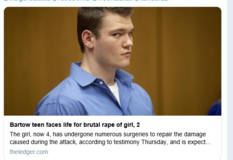These black guys seem to think that a mixed baby is black. They are 50% of each. The notion that the white race will be bred out by this is silly. At the very same time, so will the black one.Im talking to someone now who doesnt like mixed girls, but thinks whites should only be with blacks, and I have no loyalty or respect since I date a white man. Does he not realize if white women only dated blacks there would be no white women and only mixed females next generation. This is the type of mindset I dont understand, why cant white women and guys if your into just have fun with interracial sex, it doesnt need to be about what race is supiorer and the whole race needs to do what they think. Yes there are some white women who will only date black guys, and some black women who only date white guys, but for a race to continue we as a society cant all just say white women belong to black men the whites would die out then theres no white women left for the black men to breed with and this whole interracial lifestyle dies off.
You are using an out of date browser. It may not display this or other websites correctly.
You should upgrade or use an alternative browser.
You should upgrade or use an alternative browser.
I don't hate white people as a whole and I feel bad for them.
- Thread starter wierdfetish
- Start date
jamesriske
Male
Well, you'll have to update your list of black inventions. I did some research on what you listed and found them to not be true:Hope this thread opens up for discussion. You mentioned a lot of contributions by whites over the years, but it would be nice to identify things that blacks have contributed which are still in use today, like ...
Henry Blair-sparkplugs, Charles Brooks-paper punchers, David Crosthwait-Htg/AC units, Frederick Jones-refrigerated trucks, Charles Drew-the ******* bank system, Daniel Williams-1st successful open heart surgery, George Crum-potato chips, Patricia Bath-cataract surgery, Lavon Julian-birth control pills.
View attachment 657622
Think about it, what would we do without THOSE products? Particularly potato chips.
Paper punch:
The first numbered US patent for a hand-held hole punch was #636, issued to Solyman Merrick in 1838. Robert James Kellett earned the first two US patents for a chad-catching hole punch, in 1867 (patent #65090) and 1868 (#79232).
Refrigerator trucks: Refrigerated ships and railcars had been moving perishables across oceans and continents even before Jones was born (see refrigerated transport timeline). Trucks with mechanically refrigerated cargo spaces appeared on the roads at least as early as the late 1920s (see the proof). Further development of truck refrigeration was more a process of gradual evolution than radical change.
AC Units: Dr. Willis Carrier built the first machine to control both the temperature and humidity of indoor air. He received the first of many patents in 1906 (US patent #808897, for the "Apparatus for Treating Air"). In 1911 he published the formulae that became the scientific basis for air conditioning design, and four years later formed the Carrier Engineering Corporation to develop and manufacture AC systems.
Open Heart Surgery:
Dr. Williams repaired a wound not in the heart muscle itself, but in the sac surrounding it, the pericardium. This operation was not the first of its type: Henry Dalton of St. Louis performed a nearly identical operation two years earlier, with the patient fully recovering. Decades before that, the Spaniard Francisco Romero carried out the first successful pericardial surgery of any type, incising the pericardium to drain fluid compressing the heart.
Surgery on the actual human heart muscle, and not just the pericardium, was first successfully accomplished by Ludwig Rehn of Germany when he repaired a wounded right ventricle in 1896. More than 50 years later came surgery on the open heart, pioneered by John Lewis, C. Walton Lillehei (often called the "******* of open heart surgery") and John Gibbon (who invented the heart-lung machine).
******* Banks: During World War I, Dr. Oswald H. Robertson of the US army preserved ******* in a citrate-glucose solution and stored it in cooled containers for later transfusion. This was the first use of "banked" *******. By the mid-1930s the Russians had set up a national network of facilities for the collection, typing, and storage of *******. Bernard Fantus, influenced by the Russian program, established the first hospital ******* bank in the United States at Chicago's Cook County Hospital in 1937. It was Fantus who coined the term "******* bank." See highlights of transfusion history from the American Association of ******* Banks.
D
Deleted125623
Guest
LOL Mac take no notice just ignore him. Like his Walter mitty 'The surgoen told me there no Covid patients any more at the hospital' claim You can never trust a word his says. Ever!
Last edited by a moderator:
jamesriske
Male
Sure, just ignore the facts I wrote and the patent number, names, dates, etc. Just pretend it's not real and continue to believe things that are proven to be wrong. Good advice, huh?LOL Mac take no notice just ignore him. Like his Walter mitty 'The surgoen told me there no Covid patients any more at the hospital' claim You can never trust a word his says. Ever!
By the way, as an update to the NY hospital, I was just told that last week there were 100 covid patient there. So there is definitely a spike as of last week. Usually, they only had about 10. What's funny is that when there is no spike, the media reports that there is a spike. And where there actually is a spike, the media doesn't report it. That's my point about the media, it is not to be trusted. I don't think it's any sort of conspiracy, I just think they are lazy and only retell what information they get on 'the wire' without actually investigating events themselves.
Daphne, with all due respect and I say this with your best interest at heart, now that your man is in office and your party holds a majority in Congress, you can calm down now. You don't need to spend hours defending every little comment on the internet. You won, enjoy it and get on with things. Enjoy your life.
Even with the China virus going on, you can still take vacations. My wife and I drove to Sedona a week ago and had a wonderful time. There is plenty of hiking and sites to see, all virus safe. Try to pick an area that has activities you can do while still on lockdown. Heck, just drive to a cabin by a lake or something and enjoy yourself. Unwind, remove some stress.
D
Deleted125623
Guest
Blah blah blah. same old BS. Another quick fact check on your covid BS proves it to be exactly that. You and facts are like The moon and oxygene. Never there!
New yorks own data on death's and admissions
Weekly per 4 weeks
Lastly I don't live in the US , never did and never will...I'm Not American either. Didn't vote for Biden or Trump never will, never did. Didn't vote Democrat or republican never did, never will, I don't like dislike Trump or Biden. The orange idiot I distrusted due to his 30,000 lies in office and his offensive mandate to sow civil distrust and violence into the American general public for personal gain.
But the common thread between you and them is this. You post BS, lies, propaganda, or anything inbetween and I'll call you out on it. Eactly as I always have done. Its that simple!
New yorks own data on death's and admissions
Weekly per 4 weeks
| Hospitalizations People hospitalized within 14 days of diagnosis | 2,535 | 2,211 | Increasing |
| Confirmed Deaths* Deaths with a positive molecular test | 386 | 350 | Increasing |
| Updated: January 21, at 1 p.m. |
= Daphne you can please stop calling me out on my BS and false statements it's embaressing for me.Daphne, with all due respect and I say this with your best interest at heart, now that your man is in office and your party holds a majority in Congress, you can calm down now. You don't need to spend hours defending every little comment on the internet. You won, enjoy it and get on with things. Enjoy your life.
Lastly I don't live in the US , never did and never will...I'm Not American either. Didn't vote for Biden or Trump never will, never did. Didn't vote Democrat or republican never did, never will, I don't like dislike Trump or Biden. The orange idiot I distrusted due to his 30,000 lies in office and his offensive mandate to sow civil distrust and violence into the American general public for personal gain.
But the common thread between you and them is this. You post BS, lies, propaganda, or anything inbetween and I'll call you out on it. Eactly as I always have done. Its that simple!
Last edited by a moderator:
jamesriske
Male
I think you're missing the point, Daphne. My point is that the news if full of BS but you quote the news and statistics as your proof. You just don't get it, do you? Has it ever occurred to you that the news and stats you are basing your opinions on are slanted? Has this notion ever crossed your mind? (I bet the only time it has crossed your mind is when the news and stats goes against your belief system, that's how far gone you are).
I'm telling you that I know first-hand that when the NY hospital had only a few virus patients, the news reported a spike and published stats that the hospital was clogged with virus patients. And then when the hospital actually did get a spike in virus patients (over 100 of them or 1/3rd the total number of beds), the media didn't report it and reported the situation as subdued.
Whether you believe me or not doesn't matter to me. I'm just telling you what I've seen and what I know to be true and it certainly does not reflect what the media is telling you. You're not calling me out on anything or calling BS on anything.
My experience with media BS goes all the way back to Libya in the 80's when I flew for the Air *******. What I saw and experienced was completely different from what I saw the U.S. media reporting it as; completely different.
By the way, I asked a security manager at the hospital if he's seen any reporters coming in to ask questions and do a little fact checking on their own and he said that none of them bothered coming in person to count the number of patients or talk to a hospital administrator. We no longer have reporters, just people who read off a teleprompter or fashion stories slanted their way so people like you read it and believe it and go off half cocked telling someone they don't know that they are a liar for saying that they just visited a hospital and found only 10 virus patients there. The fact is, I know more about the hospital virus situation in Manhattan than all the newspapers combined; I saw it for myself.
Why this is so important to you that you have to defend it so viciously on a fetish forum is beyond me. I'm sure there is some underlying reason to your behavior.
I'm telling you that I know first-hand that when the NY hospital had only a few virus patients, the news reported a spike and published stats that the hospital was clogged with virus patients. And then when the hospital actually did get a spike in virus patients (over 100 of them or 1/3rd the total number of beds), the media didn't report it and reported the situation as subdued.
Whether you believe me or not doesn't matter to me. I'm just telling you what I've seen and what I know to be true and it certainly does not reflect what the media is telling you. You're not calling me out on anything or calling BS on anything.
My experience with media BS goes all the way back to Libya in the 80's when I flew for the Air *******. What I saw and experienced was completely different from what I saw the U.S. media reporting it as; completely different.
By the way, I asked a security manager at the hospital if he's seen any reporters coming in to ask questions and do a little fact checking on their own and he said that none of them bothered coming in person to count the number of patients or talk to a hospital administrator. We no longer have reporters, just people who read off a teleprompter or fashion stories slanted their way so people like you read it and believe it and go off half cocked telling someone they don't know that they are a liar for saying that they just visited a hospital and found only 10 virus patients there. The fact is, I know more about the hospital virus situation in Manhattan than all the newspapers combined; I saw it for myself.
Why this is so important to you that you have to defend it so viciously on a fetish forum is beyond me. I'm sure there is some underlying reason to your behavior.
D
Deleted125623
Guest
I'm telling you that I know first-hand that when the NY hospital had only a few virus patients, the news reported a spike and published stats that the hospital was clogged with virus patients. And then when the hospital actually did get a spike in virus patients (over 100 of them or 1/3rd the total number of beds), the media didn't report it and reported the situation as subdued.
Whether you believe me or not doesn't matter to me. I'm just telling you what I've seen and what I know to be true and it certainly does not reflect what the media is telling you. You're not calling me out on anything or calling BS on anything.
And I'mtelling and proving you are bullshitting. Everything you claim about the NY hospitals is utter BS Beacuse all the NY hospitals say it is. I wouldn't believe you if you said what day it was. And heres why.
The corrolated data and evidence from not only the NY hospitals themselves, but the US's CDC say your lying. The hospitals individualy say your BS'ing by their data. I could go on but why bother as its clear you lack the ability of comprehension.
By the way, I asked a security manager at the hospital if he's seen any reporters coming in to ask questions
You don't give up with your BS do you. And you wonder why people ignore you or show you up for what you are.
I suggest you take the time to reflect on your continous bouts of untruthful comments and statements and complete BS stories. Seek medical help. Go into a programme where they can help you with your inability to tell the truth. Do something from wasting your life and being viewed as the Walter Mitty of NY.
Why this is so important to you that you have to defend it so viciously on a fetish forum is beyond me. I'm sure there is some underlying reason to your behavior.
Yes theres an underlying reason. I'll tell you what it is. It's because you are a habitual peddler of falsehoods, mis-truths and complete bullshit. Its that simple.
And yet the hospitals themselves say otherwise. In fact the hospitals in Manhatten and NY has stated that there is a 14% rise in admissions since the start of January.The fact is, I know more about the hospital virus situation in Manhattan than all the newspapers combined; I saw it for myself.
Also your blatent piece of nonsense about the press and your "security manager' is the funniest of all. You see the press don't need to visit hosptials on a daily basis. And why? because all the NY and Manhatten hospitals have settled on a daily press release which is sent to the press and available online. So that begs the question. Are they lying or you?...Monies on the latter.
Lastly. Your continued attempts at trying to be right would be hilarious if it wasn't really sad how you continue to peddle after a lost cause, despite all the times you have been caught out.
I suggest you go get ******* or something Walter, do something with your existance other than wasting it being shown up as a Walter Mitty type person everytime you post. It has become undeniable that you know nothing about the situation in NY or elsewhere. Just stop trying. Just stop embarressing yourself. Go for those walks on the imaginary beach you keep mentioning. Read a book. Just do something other than wasting your life!
Bu Bye!
Race card ? Last I knew there is only one race. The HUMAN race. There is no such thing as a "pure" ethnic line. Everyone living now has at least a small percentage of a different ethnicity in them. Anyone claiming otherwise is full of it. Until anyone stops trying to claim anyone else is better this divide in this country, and world will continue.
And if it weren't for blacks, we wouldn't have sissy white boysHope this thread opens up for discussion. You mentioned a lot of contributions by whites over the years, but it would be nice to identify things that blacks have contributed which are still in use today, like ...
Henry Blair-sparkplugs, Charles Brooks-paper punchers, David Crosthwait-Htg/AC units, Frederick Jones-refrigerated trucks, Charles Drew-the ******* bank system, Daniel Williams-1st successful open heart surgery, George Crum-potato chips, Patricia Bath-cataract surgery, Lavon Julian-birth control pills.
View attachment 657622
Think about it, what would we do without THOSE products? Particularly potato chips.
It's a forum, and I have both the fetish, yet no genuine wish for extermination. I guess white did awesome things, but I think every people did. I appreciate achievements from africans in US under segregation, or under slavery times.I honestly don't hate white people nor do I wish to see them exterminated through IR breeding or what have you. I am jealous of white culture honestly. Their ingenuity and zest for exploration and their love for technology. Honestly they have lost their morals and gone down as a collective. I want to see more white monoracial families thriving and happy. I have done my part by choosing not to procreate as a black person. Black men need to do their part and stop making black babies and being so happy and sex crazy for racist white porn companies. It is disgraceful. Plus I know some white men with HUGE cocks so the stereotype is not all true and all black cock isn't big.If every white person died in 100 years at least they will go down in history as the most influential race of humans in earth history and thats more than I can say for my sorry ass race. They invented the car , train,plane,cellphone,laptop cure for various diseases and instead of thanking them and learning from them we call the "racist" and attribute their hard work to "white privelege" and that's not fair
White people have emotions too.
Asians have been awesome. Africa was simply poorly placed geographically.
Black people have probably did a lot in unrecorded history.
DOn't take everything serious.
This is the most absurd thing I have read by a NON BLACK !!! person all day...Trust that's quite a featI honestly don't hate white people nor do I wish to see them exterminated through IR breeding or what have you. I am jealous of white culture honestly. Their ingenuity and zest for exploration and their love for technology. Honestly they have lost their morals and gone down as a collective. I want to see more white monoracial families thriving and happy. I have done my part by choosing not to procreate as a black person. Black men need to do their part and stop making black babies and being so happy and sex crazy for racist white porn companies. It is disgraceful. Plus I know some white men with HUGE cocks so the stereotype is not all true and all black cock isn't big.If every white person died in 100 years at least they will go down in history as the most influential race of humans in earth history and thats more than I can say for my sorry ass race. They invented the car , train,plane,cellphone,laptop cure for various diseases and instead of thanking them and learning from them we call the "racist" and attribute their hard work to "white privelege" and that's not fair
White people have emotions too.
AnjaLepota
Male
There are lots of mentally ill men and women who enjoy this fetish. Its how they express hating themselves and their lack of identity.I agree with you completely! If they want to play the superiority card let it be as role play in the bedroom, more than that it's ridiculous. lets just say lots of people are just lame
I just enjoy being a voyeur with my wife. The rest is very very lame and off putting.
Luckily I've found the more crazy and self hating they are the worse they look so i don't really even have to pay attention to them anyway. Just my observation.
jamesriske
Male
Everything, MacNFries. I provided ample documentation to disprove all of your black inventions. I proved that the items you attributed to black inventors were in fact, invented and in use long before they supposedly invented them. I don't know how to provide more proof than I already have, I even included patent numbers for some of them.What reaction? I think I simply corrected your misunderstanding of what you perceived I said ... so, what reaction? And exactly what was not true about any of the individuals I noted to those contributions?
View attachment 735014
ps ... per chance, would it not just be better to admit you misunderstood and let it go at that?
I think you're just avoiding it because your beliefs are more a notion of faith than they are of reality.
here they are again for you. You remind me of all the 'innocent' inmates in prison. No matter what proof is in front of you, you just ignore it. Your mind has created this alternate reality for you. There's really no reason to engage you since you have such a closed mind set.
_________
Henry Blair-sparkplugs, Charles Brooks-paper punchers, David Crosthwait-Htg/AC units, Frederick Jones-refrigerated trucks, Charles Drew-the ******* bank system, Daniel Williams-1st successful open heart surgery, George Crum-potato chips, Patricia Bath-cataract surgery, Lavon Julian-birth control pills.
View attachment 657622
Think about it, what would we do without THOSE products? Particularly potato chips.
I'm a history buff and hate it when people spread misconceptions:
Charles Brooks - paper punchers?
Charles Brooks in 1893? No!
The first numbered US patent for a hand-held hole punch was #636, issued to Solyman Merrick in 1838. Robert James Kellett earned the first two US patents for a chad-catching hole punch, in 1867 (patent #65090) and 1868 (#79232).
David Crosthwait -Htg/AC units ?
No!
Dr. Willis Carrier built the first machine to control both the temperature and humidity of indoor air. He received the first of many patents in 1906 (US patent #808897, for the "Apparatus for Treating Air")when Crosthwait was 8 years old. In 1911 he published the formulae that became the scientific basis for air conditioning design, and four years later formed the Carrier Engineering Corporation to develop and manufacture AC systems.
******* Bank
Dr. Charles Drew in 1940? No!
During World War I, Dr. Oswald H. Robertson of the US army preserved ******* in a citrate-glucose solution and stored it in cooled containers for later transfusion. This was the first use of "banked" *******. By the mid-1930s the Russians had set up a national network of facilities for the collection, typing, and storage of *******. Bernard Fantus, influenced by the Russian program, established the first hospital ******* bank in the United States at Chicago's Cook County Hospital in 1937. It was Fantus who coined the term "******* bank." See highlights of transfusion history from the American Association of ******* Banks.
Refrigerated Trucks?
Frederick Jones (with Joseph Numero) in 1938? No!
Refrigerated ships and railcars had been moving perishables across oceans and continents even before Jones was born (see refrigerated transport timeline). Trucks with mechanically refrigerated cargo spaces appeared on the roads at least as early as the late 1920s (see the proof). Further development of truck refrigeration was more a process of gradual evolution than radical change.
Dr. Daniel Hale Williams in 1893? No!
Dr. Williams repaired a wound not in the heart muscle itself, but in the sac surrounding it, the pericardium. This operation was not the first of its type: Henry Dalton of St. Louis performed a nearly identical operation two years earlier, with the patient fully recovering. Decades before that, the Spaniard Francisco Romero carried out the first successful pericardial surgery of any type, incising the pericardium to drain fluid compressing the heart.
Surgery on the actual human heart muscle, and not just the pericardium, was first successfully accomplished by Ludwig Rehn of Germany when he repaired a wounded right ventricle in 1896. More than 50 years later came surgery on the open heart, pioneered by John Lewis, C. Walton Lillehei (often called the "******* of open heart surgery") and John Gibbon (who invented the heart-lung machine).
Laser Cataract Surgery
Patricia Bath "transformed eye surgery" by inventing the first laser device to treat cataracts in 1986? No!
Use of lasers to treat cataracts in the eye began to develop in the mid 1970s. M.M. Krasnov of Russia reported the first such procedure in 1975. One of the earliest US patents for laser cataract removal (#3,982,541) was issued to Francis L'Esperance in 1976. In later years, a number of experimenters worked independently on laser devices for removing cataracts, including Daniel Eichenbaum, whose work became the basis of the Paradigm Photon™ device; and Jack Dodick, whose Dodick Laser PhotoLysis System eventually became the first laser unit to win FDA approval for cataract removal in the United States. Still, the majority of cataract surgeries continue to be performed using ultrasound devices, not lasers.
jamesriske
Male
And I'mtelling and proving you are bullshitting. Everything you claim about the NY hospitals is utter BS Beacuse all the NY hospitals say it is. I wouldn't believe you if you said what day it was. And heres why.
The corrolated data and evidence from not only the NY hospitals themselves, but the US's CDC say your lying. The hospitals individualy say your BS'ing by their data. I could go on but why bother as its clear you lack the ability of comprehension.
You don't give up with your BS do you. And you wonder why people ignore you or show you up for what you are.
I suggest you take the time to reflect on your continous bouts of untruthful comments and statements and complete BS stories. Seek medical help. Go into a programme where they can help you with your inability to tell the truth. Do something from wasting your life and being viewed as the Walter Mitty of NY.
Yes theres an underlying reason. I'll tell you what it is. It's because you are a habitual peddler of falsehoods, mis-truths and complete bullshit. Its that simple.
And yet the hospitals themselves say otherwise. In fact the hospitals in Manhatten and NY has stated that there is a 14% rise in admissions since the start of January.
Also your blatent piece of nonsense about the press and your "security manager' is the funniest of all. You see the press don't need to visit hosptials on a daily basis. And why? because all the NY and Manhatten hospitals have settled on a daily press release which is sent to the press and available online. So that begs the question. Are they lying or you?...Monies on the latter.
Lastly. Your continued attempts at trying to be right would be hilarious if it wasn't really sad how you continue to peddle after a lost cause, despite all the times you have been caught out.
I suggest you go get ******* or something Walter, do something with your existance other than wasting it being shown up as a Walter Mitty type person everytime you post. It has become undeniable that you know nothing about the situation in NY or elsewhere. Just stop trying. Just stop embarressing yourself. Go for those walks on the imaginary beach you keep mentioning. Read a book. Just do something other than wasting your life!
Bu Bye!
Your personal attacks and opinions do not change the fact that I am intimately involved in many of the hospitals in Manhattan and what I wrote is true. Covid was way over reported and it was never the danger that it was made out to be.
I know people have an emotional interest in exaggerating Covid but I like to deal in facts and reality and the death rates are no more than they would be from a strong, common flu.
You're joking, right? Seriously ... that post was made on December 26, 2015 .... let's repeat this .... the post you are responding to for the SECOND time was made in the year 2015.I think you're just avoiding it because your beliefs are more a notion of faith than they are of reality.
here they are again for you. You remind me of all the 'innocent' inmates in prison. No matter what proof is in front of you, you just ignore it. Your mind has created this alternate reality for you. There's really no reason to engage you since you have such a closed mind set.
I guess you're just starving to get some conversation in this NOW DEAD political thread. No one to argue with. I could provide you a few political threads at a few other websites if you're in need of an argument.
Oh my gosh .... its 12:10PM and this discussion of a 2015 post I made is running into my lunch time.
Let's pick this back up, maybe another day .... say December 26th 2028 and maybe we can discuss the recovery status of the Republican Party, how's that?
......"adios"

Last edited:
MrUKBlack100
Male
I honestly don't hate white people
I don’t hate white ppl but then again I don’t hate Tigers but I understand a Tigers nature.
A Tiger would k.ill me and feel no remorse, not hate. It’s just there nature.
I understand the nature of the white racist and when you look at the history in truth it’s almost like blk ppl have been dealing with another species.
nor do I wish to see them exterminated through IR breeding or what have you.
You watch too more porn and well even in porn, many WW don’t do blk dudes. Hell many ******, have a “no blks” policy.
There is a STRONG contingent of white women who would never date/fuck a non-blk man. Game or no game, they’re just not trying to hear it. So white man, some of your sisters are keeping it pure for you. But are you banging them either way? Probably not.
White western culture is the most dominant on the planet. So therefore white men receive the benefits of that.
All studies on dating apps show that WM get the most messages and responses.
Also most WW wants white k.ids and they can only get that from WM.
The funny part of all this is white guys have zero problem going around and fkin women of all different races.
You cry that blacks are “diluting” the white genetic pool when they get a white girl pregnant, yet a large number of white guys are shacking up with Asian and Latina and blk or bi racial chicks and producing mixed babies of their own. Why not rage against them?
@wierdfetish
I am jealous of white culture honestly.
What’s white culture ? Explain that to me.
I’m not talking about the traditions of Scotland, Ireland, England, Poland and Russia which do have culture but white culture itself?
Coz those cultures have to be suppressed and pretty much (to white Americans) lost in the name of this European unity called whiteness.
It's white people that want to celebrate this ridiculous notion of whiteness which nobody can actually explain what white culture is.
That's why white folks feel deculturated. We didn't do this. Whites have been culturally castrated, not by liberalism or lefties and for sure not by black people.
Even famous white ppl who want to throw away there cultural names to look more white.
Woody Allen = Allen Konigsberg
Fred Astaire = Frederick Austerlitz
Tony Bennett = Anthony Benedetto
Jack Benny = Benjamin Kubelsky
Mel Brooks = Mel Kaminsky
George Burns = Nathan Birnbaum
Nicolas Cage = Nicolas Coppola
David Copperfield = David Seth Kotkin
Kirk Douglas = Issur Danielovitch Demsky
Helen Mirren = Ilynea Lydia Mironoff
Demi Moore = Demetria Guynes
Chuck Norris = Carlos Ray Norris
And then give their k.ids these really anglo white american name Noah, Madison, Tyler, Mackenzie, Miley and Dakota
That's how the white club works. White people have had to forget the history, customs and traditions of the countries that they originate from and come to together on this ridiculous notion of whiteness.
Thats the power of white supremacy. The desire for White Normalcy from even white people who change their names to whitewash any hint of ethnicity.
@wierdfetish
Their ingenuity and zest for exploration
Exploration for white ? Every white ppl have gone they have created havoc and destruction. Tell me when I’m lying ?
@wierdfetush
and their love for technology.
White culture put a lot of eggs in the basket of physical invention and physical control over its environment. I’ve always looked at the ways some whites use technology to support their supposed superiority as a zero-sum-game.
No gadget or laptop or robot can accomplish even that which bees accomplish everyday: pollinating plants that bring forth fruit, nuts and berries, and thereby keep the chain of life trotting along. Without bees human being would struggle to survive.
So even creatures to which you'd give little credit for their intelligence, are more important to life on this planet than even the most impressive pile of technological sh*t upon which you slobber over
@wierdfetish
Honestly they have lost their morals and gone down as a collective.
White ppl own everything and run everything. White men can go anywhere on planet earth “here’s a table Mr white man” white men are loved by women the world over and this is a ppl who have gone down?
@wierdfetish
I want to see more white monoracial families thriving and happy.
Says the person who is on website promotes I/R sex right ? I mean I’m really trying with you here dude
And let’s be clear on this white are dying out thing
Whites 2000 years ago.
Whites today
You need to remember what a genocide and being wiped out really is
Is there any racial genocide like this being done to white ppl solely because they're white
If so, please show me the cattle cars, bullets, machetes, or Zyklon B.
I'll wait.
It's an affront to actual victims of mass extermination to hint at your wounded sense of entitlement as a genocide.
@wierdfetish
I have done my part by choosing not to procreate as a black person.
No one believes your blk. And if I’m wrong let’s do a zoom call. I’ll show my face. Will show yours ?
So it’s blk ppls fault now that whites are not having as many ******* as you wish
If whites aren’t making enough white babies that is not anyones fault but theirs. No one is “replacing” you. You decided not to replace yourself. That is not black people’s problem or burden.
Race-mixing is being done by : Who ? White people.
White people choosing to have fewer children is being done by : Who ? White people.
If this is a genocide, it’s the first in history to be carried out mainly by its own targets.
@wierdfetish
Black men need to do their part and stop making black babies.
Happen. Not. Gonna
@wierdfetish
and being so happy and sex crazy for racist white porn companies.
Sex crazy ? All men are sex crazy.The way white racists try to frame positive things as negative but only in regards to black ppl.
First off most of the ppl on this site are white and non blk ppl and considering you threw the first shot by saying blk men are sexual beast. Let’s open that up and look at who true sexual beasts are
Black men in the west are only race of men that don't have a system where the abuse of women and ch.listen is condoned.
Black men ain't on the dark web exchanging messed up pics of k.ids. White men are. Tell me when I’m lying ?
Black men ain't travelling abroad looking for places where they can abuse k.ids. White men are. Tell me when I’m lying ?
All these baby sex rings, olympic sexual abuse of young female athletes, all the peados running around in hollywood.
Show me examples of black men behind this ?
And you DARE say blk men are sex crazy ?
Every race has it's knuckleheads but the abuse of women and k.ids is not systematically condoned in black society.
A black man in the hood that's known to sexually mess with k.ids ? He'll get beaten to within an inch of your life
Meanwhile


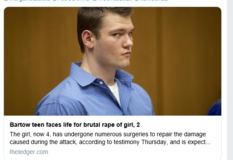
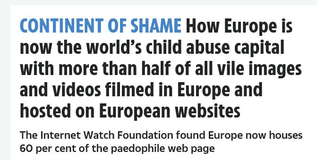
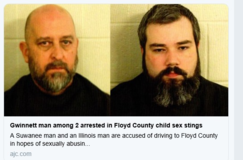
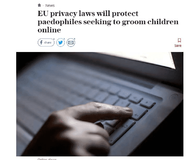




In Africa they ain’t playing that sh&t n they’re trying to shut it down
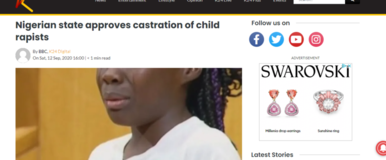
YOU CANNOT COME TO ANY BLACK AREA IN THE WEST (America and Europe) and blk man will point you to places were you can mess with k.ids
@wierdfetish
they invented the car
Sure white people have invented some good things
Happy now ?
But at the same time 99.99% of white people have invented nothing.
And since whites supremacists theorize blacks are subhuman, then why open the door to a monkey ? That’s always white racist logic and as long as they never let blks “in” that logic is safe
So called western contributions are not because white people are so much smarter than everyone else but because progress in science and invention is built on what has gone before.
The more science you know the more science you can discover. The more inventions you have at hand. The more new inventions you can come up with. That is why the progress is exponential. It comes from the nature of science and technology, not from the nature of white intelligence.
@wierdfetish
train
Great but black people created the most important invention.
Agriculture and Iron Smelting were two of the most important things man ever discovered.
Humans spent thousands of years as hunter gatherers before somebody figured out that if you plant seeds in the ground, irrigate and take care of them, you can settle in one area and not have to wander about looking for food.
Seems pretty obvious, but if nobody explained it to you, you’d have no idea how it works.
Iron smelting and forging for tools and weapons, appeared in Sub-Saharan Africa by 1200 BCE. This led to improved weaponry and enabled farmers to expand agricultural productivity and produce surplus crops, which together supported the growth of urban city-states into empires.
@wierdfetish
plane
Of course most inventions in the past 400 years we’re made by whites because they’ve been in top in that time
If inventions were because white people are born with more brains, then they would have been on top all throughout all history.
Anglo power (European and American) is fresh in our minds, but it is merely the latest chapter in the book of history. And that is the Historical Context that you’re argument forgets.
You forget that you live at only one point in history, that other points in history were different.
700 years ago the Chinese could have ran around bragging how smart and inventive they were. After all whites would be nowhere without four Chinese inventions:
1) Gunpowder
2) The compass
3) Paper
4) The printing press.
Their rise to world power was built on these.
Attachments
Last edited:
Will you EVER STFU, man?You forget that you live at only one point in history, that other points in history were different.
Damn! Give it a frik'n rest, dude!
The "hater" in this thread is YOU ... why not go look in the frik'n mirror.
"yak, yak, yak, yak!"
Similar threads
- Replies
- 6
- Views
- 2K

